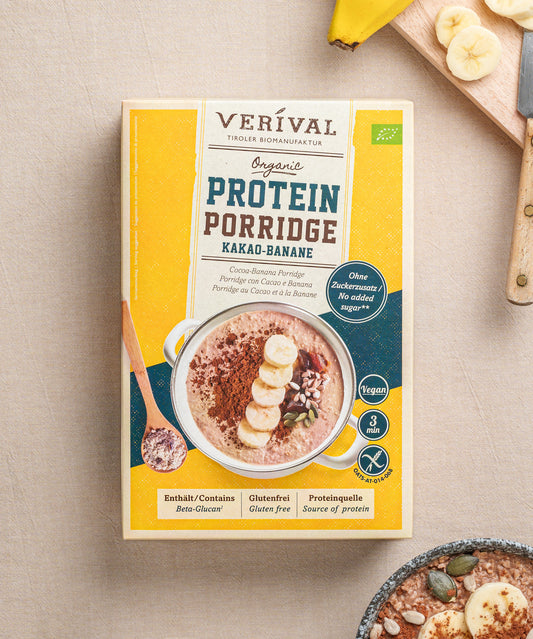The body mass index (BMI) is supposed to indicate whether a person is normal, overweight or underweight. A BMI calculator is often used to calculate BMI.
The BMI combines body weight and height into a single value.
Although this is quite meaningful, it is only of limited use for strength athletes and bodybuilders. There are other ways to determine a person's state of health more accurately.
In this article, you will learn what the BMI says about strength athletes and what other measures there are for physical health. You will also learn how to influence your BMI.
Calculate your BMI – find out more
Do strength athletes and bodybuilders have a higher BMI?
BMI is a value between 12 (extremely underweight) and > 40 (severe obesity) that indicates whether you have a healthy weight for your height.
The example of strength athletes and bodybuilders clearly shows that a high BMI does not always mean that you are too fat. According to the BMI calculator, these two groups of people are often overweight.
Muscles are heavier than fat because they contain significantly more water. Muscular people are therefore heavier on average than those who do not exercise. The BMI proves to be an inaccurate indicator here.
A BMI calculator is based on a simple principle. The weight is divided by the height squared. And with that, a human body is reduced to these two variables.
Although the BMI is interpreted differently depending on age and gender, all other individual characteristics are ignored.
The BMI can therefore be used as a rough guide for non-athletes. However, if an athlete is overweight according to BMI, they should not take this result too seriously.
It is not uncommon for endurance athletes to be underweight, and this is not a cause for concern. Nevertheless, you should always keep an eye on your weight and health.
BMI for male strength athletes
According to the BMI table, an average young man should have a mass of 18.5 to 24.9 kg/m2, i.e. a BMI between 18.5 and 24.9. With increasing age, a higher value is also acceptable.
For experienced strength athletes, a healthy BMI starts in the overweight range. They often have a BMI between 25 and 29.9.
Very well-trained bodybuilders sometimes even have a body mass of over 30 kg/m2. According to the table, this would make them obese.
BMI in female strength athletes
Women of normal weight have a BMI between 17.5 and 24 kg/m2. As with men, this value may increase over the years.
Female strength athletes often have a BMI well above 24 and more often towards 30.
Can bodybuilders and strength athletes also have a lower BMI?
There are several things that a BMI calculator always disregards: for example, genetic predisposition (body type) and personal fitness.
Even for bodybuilders, the BMI mentioned above is a standardised value. Inborn characteristics such as bone density can make a big difference in weight.
Therefore, as a bodybuilder, you should not worry if your BMI is below 25. As you gain muscle, your weight will automatically go up – and so will your BMI.
That's why bodybuilders and strength athletes should only see BMI as a rough guide!
For bodybuilders and strength athletes, BMI alone is not enough to determine their physical condition. There are other measurements that say more. 1
These include the waist-hip ratio. For athletes, this is often low (0.7-0.8). This is because they usually have less fat stored in their abdominal cavity than untrained people.
Their waist size is therefore smaller in relation to their hips. On average, women also have a lower waist-hip ratio.
Bodybuilders and strength athletes will also frequently check their body fat percentage using scales.
This gives them two fairly accurate indicators of their personal fitness.
How you can influence your BMI with a healthy diet and strength training
If you want to change your weight – and thus your BMI – you should pay attention to the right kind of exercise and a suitable diet. A high-protein, low-fat and low-sugar diet is the basis for an active life.
Combined with sporting activity, it helps to build muscle and burn fat.
Endurance sports are more likely to help you lose weight. Strength training will build significantly more muscle and you will gain weight in the long run.
In both cases, your diet should consist of these components:
- Long-chain carbohydrates, for example from oats, which provide long-lasting energy
- proteins that promote muscle building after training. The German Nutrition Society recommends a mix of plant-based proteins ( nuts, seeds, poppy seeds) and animal proteins (quark, yoghurt, milk)2
- Plus vitamin sources to taste: berries, apples, stone fruit – or a banana for an energy kick and a good portion of magnesium
An ideal breakfast, for example, is VERIVAL Protein Muesli or Porridge for athletes: it is rich in essential amino acids from oat flakes. This makes it suitable for anyone who wants to change their BMI and adopt a healthier lifestyle.
Discover Verival's sports breakfast now
- Petri C, Mascherini G, Bini V, et al. Integrated total body composition versus Body Mass Index in young athletes. Minerva Pediatr. Published online June 2020. doi: 10.23736/S0026-4946.16.04439-X
- König D, Carlsohn A, Braun H, et al. Proteins in sports nutrition. Position of the working group sports nutrition of the German Nutrition Society (DGE). Ernahrungs. Ernährungs Umschau. Published online July 15, 2020:132-139. doi: 10.4455/eu.2020.039
























